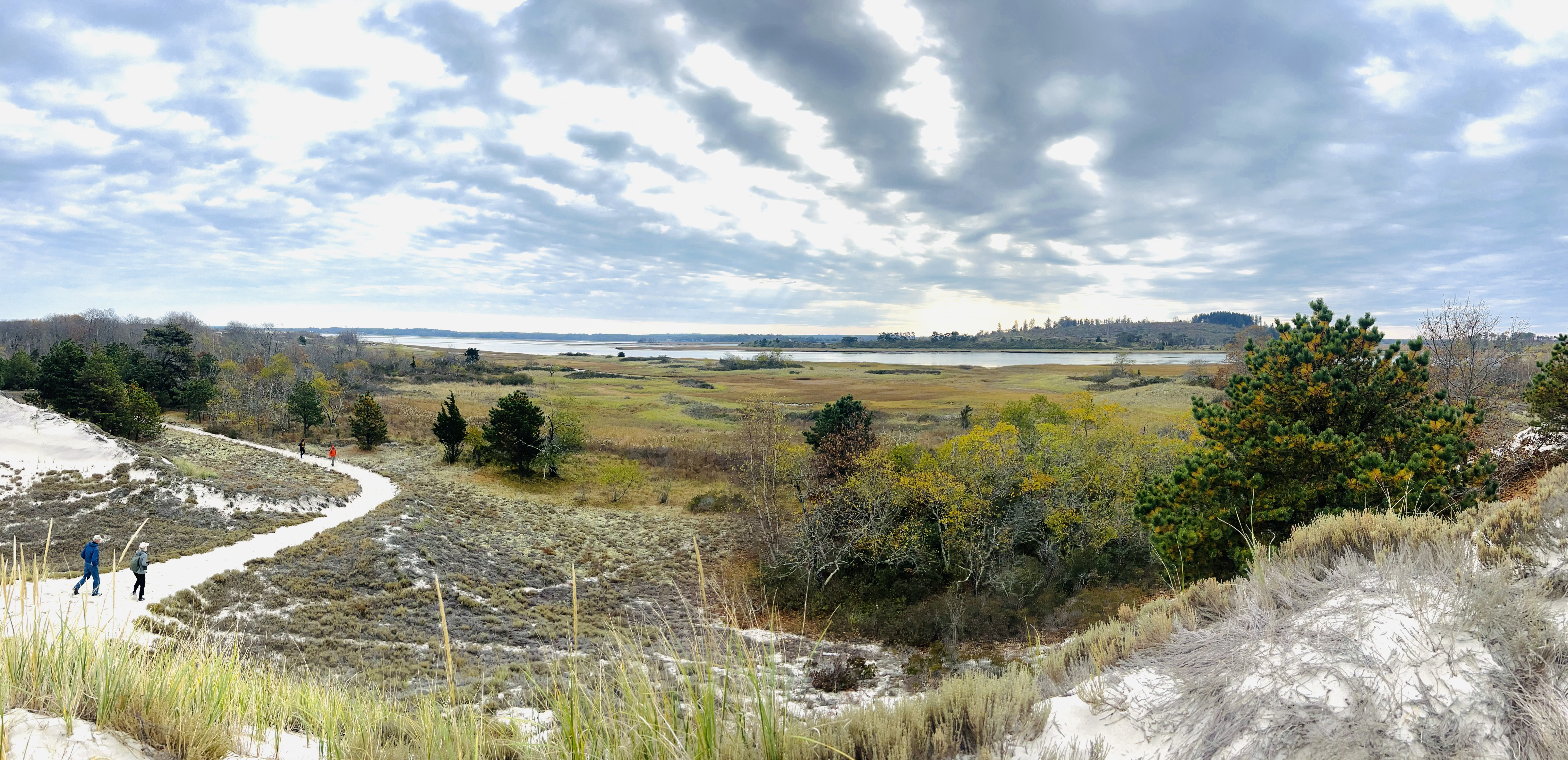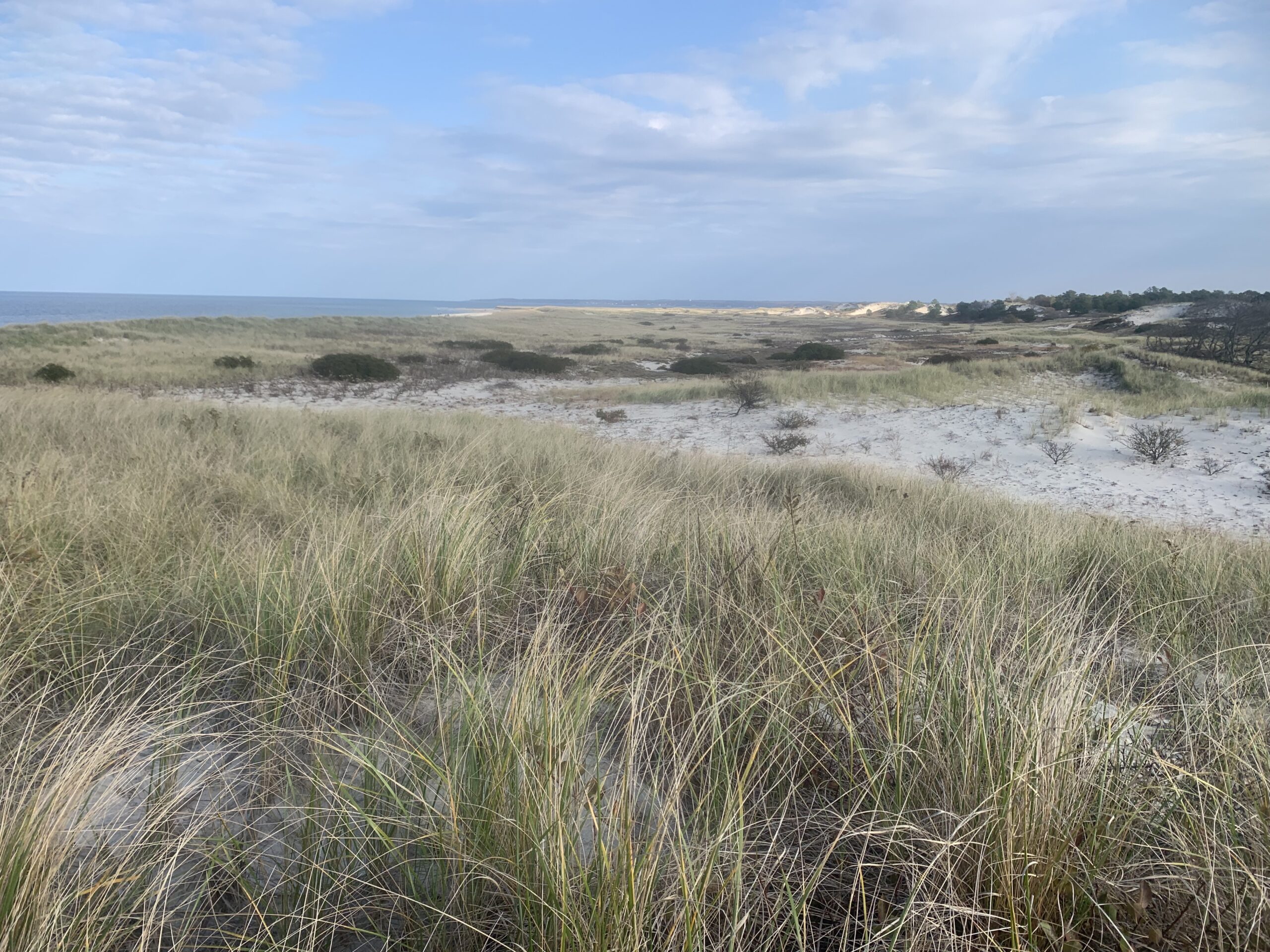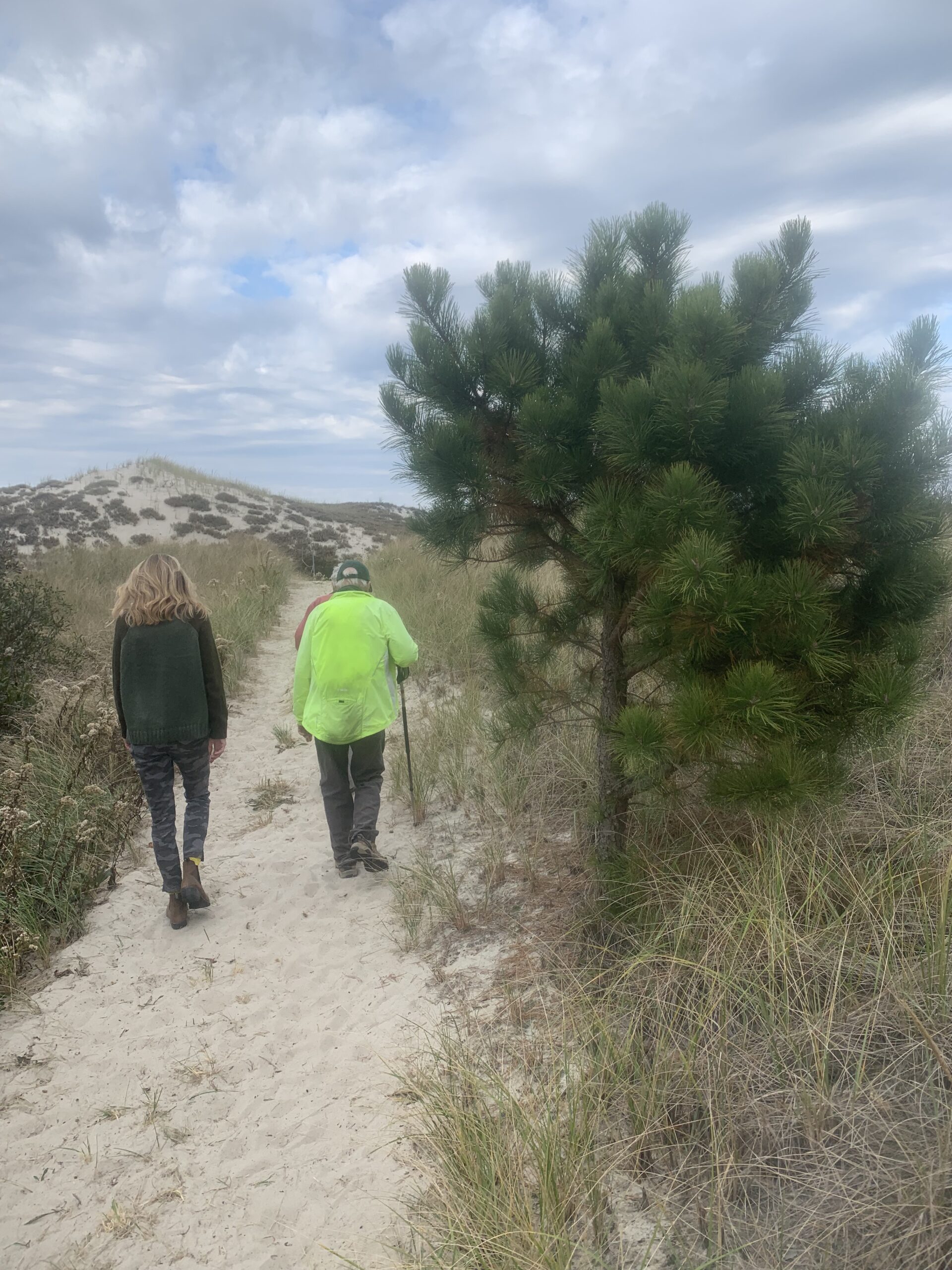


Crane Beach in Ipswich, Massachusetts, is a popular spot in summer, even if the water’s a bit chilly. However, there’s no better time to hike the network of trails that wind through and behind the sand dunes and marshes of Castle Neck than in the cooler fall months.

The property is owned and managed by The Trustees, and comprises more that 1,200 acres of maritime forest, dunes, marshland, and exposed ocean beach. There is an entrance pass fee of $10, and passes must be reserved online. Dogs are allowed on-leash along the beach, but not on the interior trails, and there’s also an off-leash dog-friendly area to the left of the parking lot.

The Castle Neck trail system begins on the south side of the large parking lot on the Green Trail. This sandy, 1.7-mile loop trail winds through pitch pine and stunted scrub oak, before linking to the Red Trail. The Red Trail, a 2-mile loop trail, leads hikers up Wigwam Hill for terrific views of the surrounding marsh, Choate Island, the Essex River estuary. Make your way down the hill and you can follow a spur trail to the marshy shores of Essex Bay.
If you want to press on, you can continue on the Blue (.3 mile), Yellow (.8 mile), and Black (.5 mile) trails to the tip of Castle Neck, where the Essex River meets the Atlantic Ocean. If you stay on the Red Trail, you can eventually take a side trail to the beach and return to the parking area that way.
Combining all of the Castle Neck trails in a single hike yields a round-trip distance of around 10 miles. Be aware that walking through the soft sand can be quite strenuous—and be prepared to get lots of sand in your shoes!
Like all dune habitat, Castle Neck is extremely fragile, so be sure to stay on the designated trails.
In early fall, expect to see a variety of migratory birds passing through the area. Keep an eye out for warblers and raptors, including northern harrier and the tiny American kestrel. Common resident species include chickadee, nuthatch, kinglet, blue jay, cardinal, hairy woodpecker, song sparrow, and white throated sparrow. Along the marsh, expect to see white egret, snowy egret, great blue heron, and sandpipers.
A detailed map of the property can be downloaded here.
